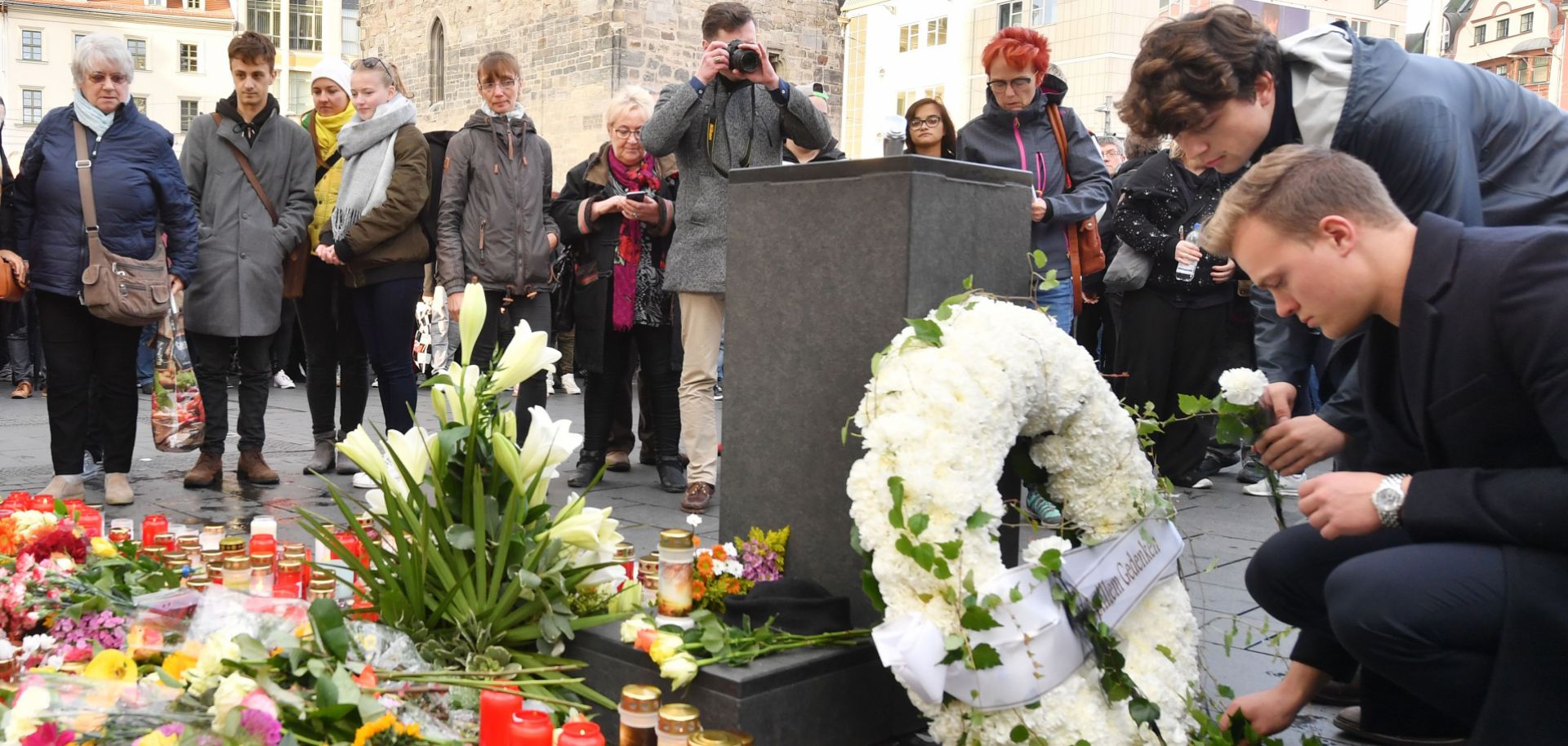COLUMNS
Protective Intelligence Lessons From a White Supremacist Attack in Germany

Oct 15, 2019 | 09:30 GMT

Mourners place flowers at a makeshift memorial on Oct. 10, 2019, at the market square in Halle, Germany, one day after a deadly anti-Semitic shooting.
(HENDRIK SCHMIDT/DPA/AFP via Getty Images)
Highlights
- Like many jihadists, the white supremacist who attacked a German synagogue on Yom Kippur was radicalized online and had no known connection to far-right extremist groups.
- Even so, several points existed during his attack cycle where he would have been vulnerable to detection had someone been paying attention.
- Locked doors and the congregation's alertness prevented an even larger tragedy in this case, but it would have been better to detect and prevent the attack during the planning phase.
Subscribe Now
SubscribeAlready have an account?
